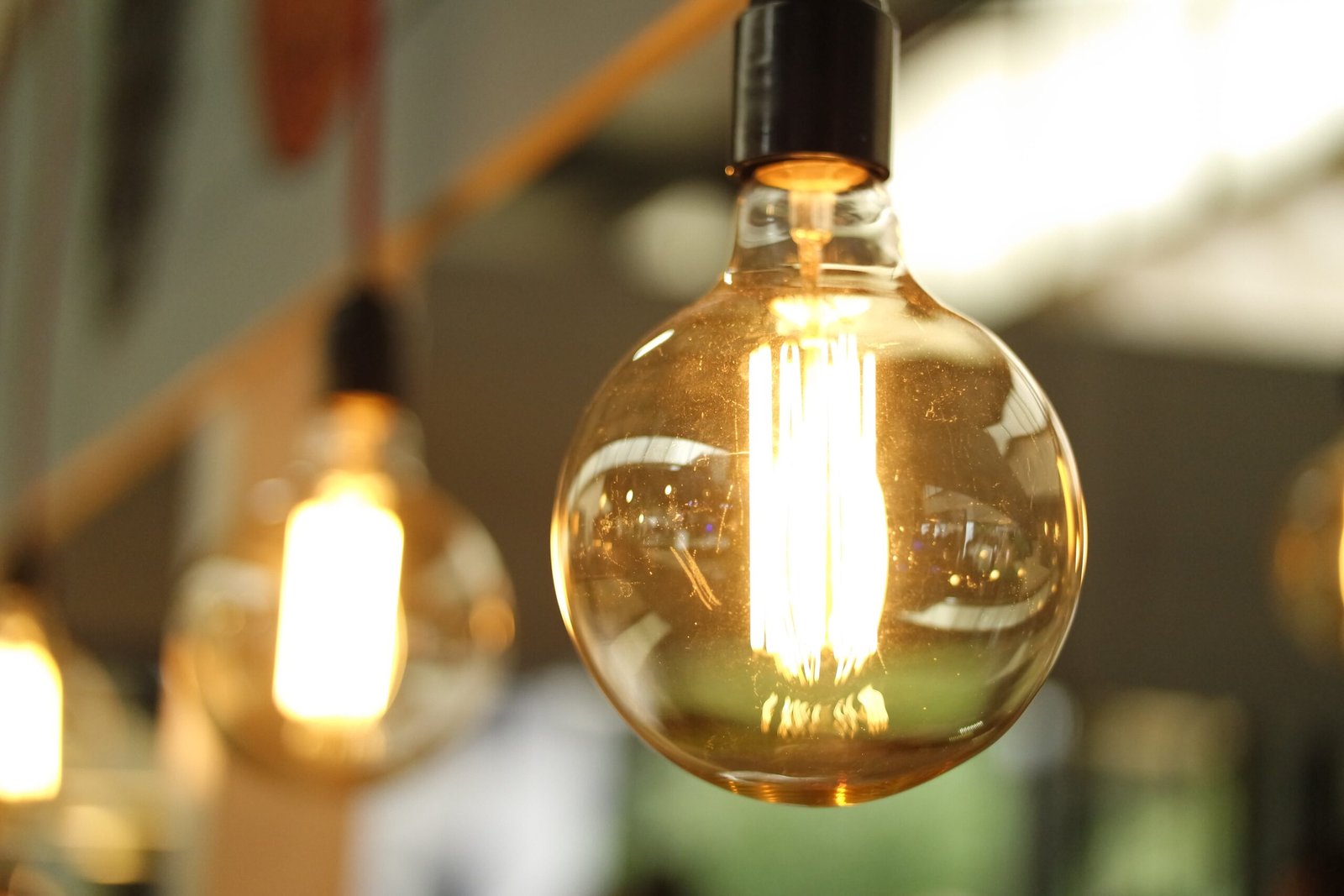Managing your email inbox effectively is essential for maximizing productivity and staying organized. With the constant influx of messages, it’s easy to feel overwhelmed and lose track of important information. In this article, you will discover practical strategies and tips on how to efficiently organize your email inbox, allowing you to streamline your communication and prioritize your tasks with ease. From creating folders and utilizing filters to implementing a clear labeling system, this guide will empower you to take control of your inbox and optimize your email management for better efficiency.

Create Folders
Managing a cluttered inbox can be a daunting task, but by creating folders, you can easily organize your emails and improve your efficiency. Start by categorizing your emails based on different projects or topics. For example, you can create folders for work-related emails, personal emails, or specific projects you’re currently working on. This categorization will help you quickly locate relevant emails when needed.
To further enhance organization, consider creating subfolders within each main folder. For instance, if you have a folder for work-related emails, you can create subfolders for different clients or departments. This hierarchical structure ensures that your emails are sorted in a logical manner, making it easier for you to navigate through your inbox.
When naming your folders, it’s essential to use consistent and descriptive names. Avoid generic names like “Folder 1” or “Miscellaneous.” Instead, opt for names that accurately represent the content and purpose of the folder. This way, you can quickly identify the folders and locate the emails you need.
Set up Filters and Rules
One of the most effective ways to streamline your inbox is by setting up filters and rules. These automated settings can save you precious time by automatically sorting incoming emails into specific folders based on predefined criteria. For example, you can create a rule that directs all emails from a particular sender or with a specific subject line to a designated folder.
By redirecting non-essential emails to separate folders, you can prioritize important messages and reduce the clutter in your inbox. This way, you won’t waste time sifting through irrelevant emails when you need to focus on critical tasks.
Take some time to explore the filtering and rule-setting options in your email client or service. You’ll be amazed at how much time and effort you can save by automating the organization of your emails.
Use Labels or Tags
Labels or tags are another fantastic way to categorize and visually group your emails. Depending on your email service provider, this feature may be called labels or tags, but the functionality remains the same. When you assign labels to emails, you can easily identify them by color-coding the labels. For example, you can assign a red label to all urgent emails and a green label to all personal emails.
To ensure maximum efficiency, consider creating custom labels for specific purposes. This way, you can easily recognize certain types of emails without even opening them. For instance, you can create a label for newsletters or notifications to quickly identify them and handle them at a later time.
By employing labels or tags, you’ll have a visual aid to help you quickly navigate through your inbox and identify the emails that require immediate attention.
Archive or Delete Unnecessary Emails
A cluttered inbox not only hampers efficiency but also hinders your ability to find important emails. Regularly clearing out irrelevant or outdated emails is crucial for maintaining an organized inbox. Take some time each day or week to delete or archive emails that no longer serve a purpose.
Consider creating an archive folder where you can store important but less urgent emails. By moving these emails out of your main inbox, you can ensure that your focus remains on the emails that require immediate attention. This archive folder serves as a repository for emails that you may need to refer to in the future but don’t need to keep in your active inbox.
Additionally, it’s essential to promptly delete spam and unwanted emails to prevent them from cluttering your inbox. Most email service providers have built-in spam filters, but it’s always good practice to review your spam folder regularly and delete any false positives.

Utilize the Search Function
With an ever-growing number of emails flooding our inboxes, searching for specific emails or keywords manually can be a time-consuming task. Thankfully, email clients provide powerful search functionalities that can help you find what you are looking for quickly.
Take advantage of the search function by using specific keywords or phrases to narrow down your search. Additionally, most email service providers offer advanced search operators that allow you to refine your search even further. For example, you can search for emails from a specific sender within a specific date range or search for emails containing attachments.
Save time by saving your frequently used search queries as shortcuts or bookmarks for quick access in the future. By utilizing the search function effectively, you’ll be able to locate emails swiftly without spending excessive time scrolling through your inbox.
Organize Emails by Priority
To ensure that your most important emails don’t get lost in the shuffle, it’s crucial to prioritize them. One way to do this is by flagging or marking important emails. Most email clients allow you to highlight specific emails as urgent or important, making it easier for you to give them immediate attention.
Consider creating a separate folder specifically for urgent action items. This folder should house emails that require your immediate response or attention. By separating these critical emails from the rest of your inbox, you can minimize the chances of missing important deadlines or tasks.
For emails that require follow-up or further action, set reminders or create tasks in your preferred task management system. By systematically tracking your high-priority emails, you can ensure that they are addressed promptly and efficiently.

Unsubscribe from Unnecessary Mailing Lists
One common cause of email overload is being subscribed to numerous newsletters or promotional mailing lists. To tackle this issue, take the time to unsubscribe from any mailing lists that no longer interest you or provide value. Most newsletters have an “unsubscribe” link at the bottom of their emails, allowing you to opt out easily.
If you find it challenging to identify and unsubscribe from all the mailing lists you’re subscribed to, consider using email management tools. These tools analyze your inbox and provide a list of all the newsletters and subscriptions you receive. With just a few clicks, you can unsubscribe from multiple lists, decluttering your inbox in no time.
To further minimize the influx of individual emails, consider opting for a daily or weekly digest instead. This way, you’ll receive all the updates or information in a single email, reducing the overall clutter in your inbox.
Use Email Templates
If you find yourself repeatedly sending similar emails, creating templates can be a huge time-saver. Email templates allow you to compose standard replies or messages and save them for future use. This way, you won’t have to start from scratch every time you need to send a particular type of email.
Customize your templates to suit different types of recipients or situations. For example, you can create templates for client inquiries, project updates, or internal team communication. By having these pre-composed emails readily available, you’ll be able to respond to emails faster while maintaining a consistent and professional tone.
Email templates are especially useful for scenarios where you need to provide common information, such as product or service descriptions. Instead of rewriting the same information repeatedly, you can simply insert the relevant template and make any necessary edits.
Manage Notifications and Alerts
Constant email notifications can be major distractions and disrupt your workflow. To maintain focus and efficiency, it’s essential to manage your email notifications effectively. Assess the relevance and significance of each email notification you receive and disable any unnecessary ones.
Filtering your email notifications will help you determine which alerts require immediate attention and which can be addressed at a later time. Most email clients allow you to customize the types of notifications you receive, so take advantage of this feature to optimize your email management.
To avoid constantly checking your email, set specific times during the day to dedicate to email management. This way, you can focus on other tasks without being constantly interrupted by incoming emails. By batching your email checking and response times, you’ll have more control over your productivity and prevent email overload.
Regularly Clean and Streamline Inbox
Maintaining an organized inbox requires consistent effort. Schedule dedicated times to clean and streamline your inbox, ensuring it remains clutter-free and efficient. Set aside specific intervals, whether daily, weekly, or monthly, to clear out unnecessary emails, update folder structures, and reassess your inbox organization.
When addressing emails, aim to respond or take necessary action promptly. Leaving emails unanswered for an extended period can contribute to the accumulation of unread messages, making it harder to stay organized.
Periodically review and update your folder structures and labels as your needs evolve. As projects end or your priorities change, adjust your email organization accordingly to ensure ongoing efficiency. Cleaning and streamlining your inbox regularly will help you maintain control over your email management and ensure that it remains a helpful tool in your productivity arsenal.
By adopting these strategies and implementing them consistently, you’ll be able to organize your email inbox more efficiently. Remember, an organized inbox not only saves you time and effort, but it also allows you to stay focused and productive in your daily tasks. So, take the time to set up folders, utilize filters and labels, manage your notifications, and regularly clean your inbox – you’ll reap the benefits in no time!
